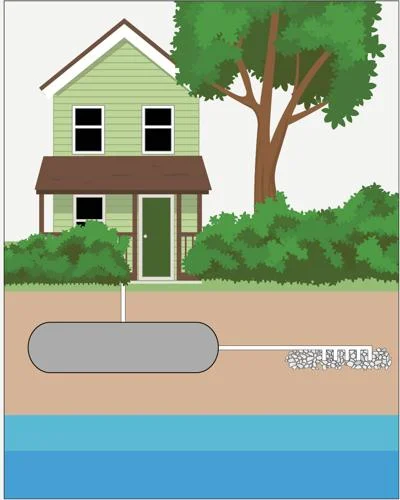A Hidden Menace Beneath the Surface
As weather patterns shift and groundwater levels rise in many parts of the country, property owners face an invisible threat to their homes and health. Once installed and forgotten, Septic systems are increasingly vulnerable to a condition few homeowners anticipate: high water tables that interfere with the system’s ability to function.
When systems back up or fail, homeowners often scramble to figure out who to call for septic problems, only to realize the issue could have been mitigated with awareness and early intervention. This article explores how the climate’s quiet changes can make your backyard a health hazard.
What Is a Water Table and Why Should You Care?
The water table is below ground, with soil fully saturated with water. In healthy, functioning septic systems, wastewater flows into a drain field, which percolates safely into the soil. But when the water table rises too close to the surface, it compromises this critical absorption.
When soil becomes oversaturated, the septic system cannot drain efficiently. Wastewater can then back into the home or pool on the ground’s surface, leading to biohazard risks, unpleasant odors, and expensive remediation.
Why Water Tables Are Rising
Several factors contribute to the rising water table phenomenon:
• Increased rainfall and flooding: Climate change has increased the intensity and frequency of storms. Areas that once experienced seasonal rains are now subject to repeated soaking, which saturates the ground for longer durations.
• Coastal and low-lying developments: More homes are being built in floodplains and near wetlands where water naturally accumulates.
• Urbanization: Impermeable surfaces like concrete and asphalt prevent rainwater from draining properly, redirecting it into groundwater channels and elevating water tables.
This creeping issue doesn’t always present immediate symptoms. Many systems appear to function until a heavy rain or seasonal thaw reveals the failure.
The Health and Financial Impacts
Failure to address high water table issues can lead to:
• Contaminated groundwater: When untreated waste leaches into the groundwater, it can pollute drinking water supplies and ecosystems.
• Structural damage: Pooling water and sewage can cause foundation erosion or damage landscaping investments.
• Severe repair costs: Replacing a failed septic system can cost tens of thousands of dollars, depending on accessibility, local regulations, and the complexity of the solution.
Homeowners must recognize the need to act before problems escalate. Knowing who to call for septic problems isn’t just a crisis measure; it’s part of responsible home maintenance.
Solutions and Mitigation Strategies
• Periodic inspections: Professionals can identify signs of hydraulic overload, such as slow drainage or wet spots above the drain field.
• Riser and filter installations: These upgrades make it easier to monitor system performance and catch early signs of failure.
• Elevated or mound systems: In areas prone to high water tables, these systems allow for drainage above the natural ground level.
• Drainage planning: Redesigning your yard’s slope or installing French drains can redirect stormwater away from your septic area.
• Rainwater management: Use rain gardens or permeable pavers to minimize surface runoff that could saturate your septic field.
High water tables are no longer an abstract geological concept but a practical concern for homeowners with septic systems. While this issue often builds quietly, its consequences are anything but subtle. Understanding how environmental shifts interact with private infrastructure can help you make smarter inspections, upgrades, and long-term property health decisions.
Whether you’re dealing with warning signs now or want to protect your home against future issues, identifying who to call for septic problems is a foundational step. But more importantly, don’t wait until the earth pushes your wastewater back at you. Act early, stay informed, and protect your property from this slow, rising threat.






